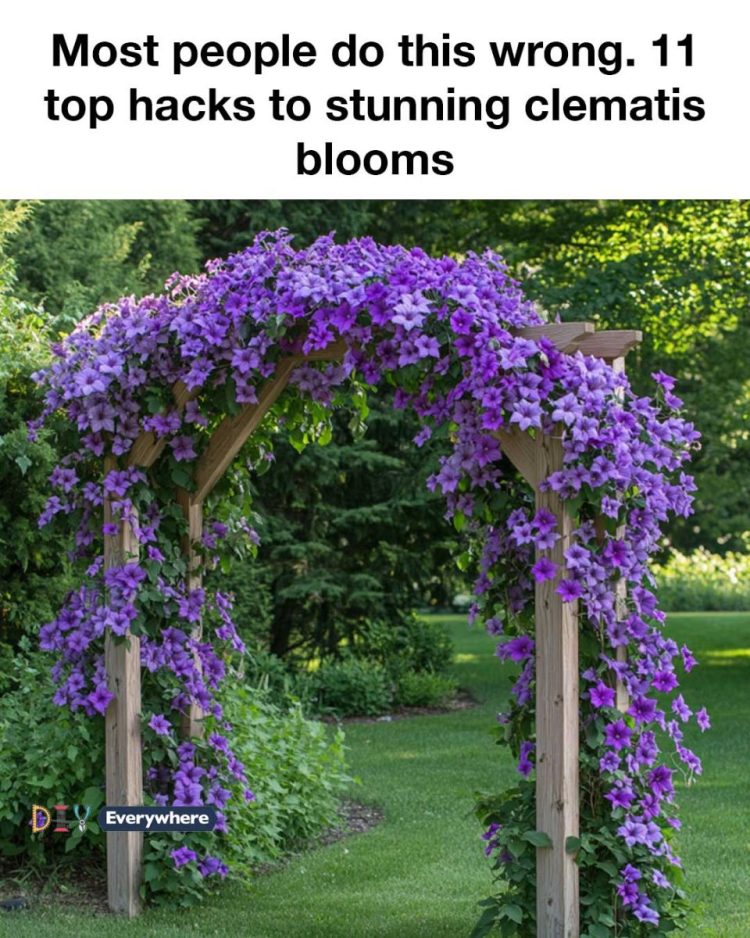Clematis, often referred to as the ‘queen of climbers,’ is a favorite among gardeners for its stunning blooms and versatility. However, many enthusiasts find themselves disappointed when their clematis fails to thrive or produce the vibrant flowers they envisioned. The secret to success lies in understanding the specific needs of this beautiful plant and implementing a few expert tips to ensure it flourishes.
In this article, we’ll explore 11 top hacks that will transform your clematis from lackluster to breathtaking. Whether you’re a seasoned gardener or a novice, these strategies will help you achieve the stunning clematis blooms you’ve always wanted. From choosing the right variety to mastering pruning techniques, we’ve got you covered.
1. Choose the Right Clematis Variety for Your Climate
Selecting the appropriate clematis variety for your climate is crucial. Clematis is divided into three groups based on their blooming habits and pruning requirements. Group 1 varieties, such as Clematis montana, bloom on old wood and are ideal for cooler climates. Group 2 includes large-flowered hybrids that bloom on both old and new wood, making them versatile for various climates. Group 3 varieties, like Clematis viticella, bloom on new wood and are perfect for warmer regions.
Research the hardiness zone of your area and choose a clematis variety that will thrive under those conditions. For instance, if you live in USDA Zone 4, opt for hardy varieties like Clematis alpina or Clematis macropetala, which can withstand colder temperatures.
2. Planting Depth: The Secret to Strong Roots
Proper planting depth is essential for establishing a strong root system in clematis. When planting, ensure the crown of the plant is buried about 2 to 3 inches below the soil surface. This encourages the development of additional stems and roots, leading to a more robust plant.
Dig a hole that is twice as wide and deep as the root ball, and mix in organic matter such as compost to improve soil fertility and drainage. Position the plant at the correct depth, backfill with soil, and water thoroughly to eliminate air pockets.
3. The Importance of Proper Pruning Techniques
Pruning is a critical aspect of clematis care, and understanding the pruning group of your plant is key. Group 1 clematis should be pruned immediately after flowering, removing only dead or damaged stems. Group 2 varieties require light pruning in late winter or early spring, cutting back weak or dead stems and trimming healthy stems to the first pair of strong buds.
Group 3 clematis benefit from hard pruning in late winter or early spring, cutting all stems back to about 12 inches above the ground. This encourages vigorous growth and abundant blooms on new wood. Always use sharp, clean pruning tools to prevent disease transmission.
4. Optimal Sunlight Exposure for Vibrant Blooms
Clematis thrives in full sun to partial shade, requiring at least 6 hours of sunlight per day for optimal blooming. However, it’s important to keep the roots cool and shaded. Planting low-growing perennials or adding a layer of mulch around the base can help achieve this balance.
see continuation on next page
